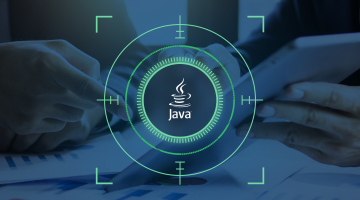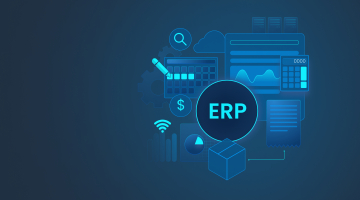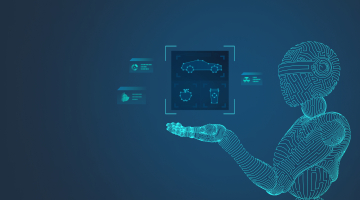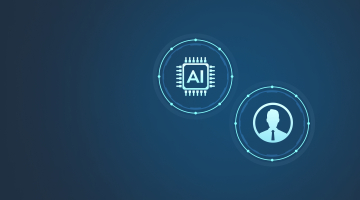

ERP implementation life cycle: Main frameworks and phases
Together with customer relationship management (CRM) software, enterprise resource planning (ERP) systems constitute the backbone of most contemporary businesses’ digital environments. On our blog, you could read a lot of articles on ERP topics. Below you can find a complete list of links to those posts. Although you’ve probably read about ERP implementation phases, we decided to explain the ERP life cycle in detail. Due to a great number of research papers written on this topic, there is no general view of the life cycle, thus you should make up your mind on what model to choose for your organization.
First off, this article will be based on the findings of the conference paper written by Tingting Huang and Kazuhiko Yasuda which contained a comprehensive annotated bibliography review of literature related to the ERP life cycle concept. It turned out that the authors of the report have selected 26 original models of ERP life cycle stages introduced by different researchers.
Just imagine, 26 papers! Each of those papers has its own description of ERP. There’s no wonder now why companies adjust their ERP portal to a certain model.
Read more on the topic:
ERP system types.
What is an ERP implementation cycle?
To implement ERP (enterprise resource planning) software, you should clearly understand what an ERP implementation lifecycle is. Simply put, it is a process consisting of a few steps (the number of steps may differ, however, usually, these are eight), from a discovery phase and planning to system launch. Typically, such a project may last from six to 12 months. For example, the ERP implementation phases may look like this:
- Pre-evaluation screening. Before choosing a new ERP system to harness, an organization should obtain a clear vision of its needs. So, all ERP implementations start with an out-and-out analysis of the company’s challenges, goals, resources, and tools. Conventionally, ERP business case identification is performed by a joint team comprising representatives of stakeholders who will use the solution in their pipeline business operations.
- Package evaluation. With a comprehensive inventory of an enterprise’s needs on your table, you can select a suitable ERP system that will dovetail with your requirements. If the available boxed solutions can’t perform the necessary business functions, the right ERP system for you is a bespoke one created by a vetted ERP vendor.
- Project planning phase. A successful ERP implementation is conditioned by a detailed ERP project roadmap. A typical ERP implementation plan covers such aspects as the ERP implementation team roster, the list of resources to be utilized in the ERP implementation process, various technical details (such as the need for existing data migration, legacy data integration, switching over to a cloud-based ERP, etc.), the budget to be allocated, the ERP implementation project timeline with major milestones, and project deliverables as key performance indicators the new system should display.
- Gap analysis. In case the organization already has such software as an element of its digital infrastructure (as a rule, it is an on-premises ERP system), the ERP project team compares the condition and functioning of current legacy systems and their expected operation in the future. In this way, existing systems’ inadequacies are exposed so that the chosen ERP software can fill this gap.
- Re-engineering. The planning and gap analysis stages generate huge amounts of data leveraged as insights to enable ERP solutions to facilitate and streamline processes within the organization’s workflow, improve operational efficiency, boost inventory management, and optimize other aspects of the company’s pipeline routine.
- Customization. If you opt for different ERP systems available on the market, your in-house team or ERP implementation partner should tailor the system to your organization’s specific purposes. It means adding or modifying ERP modules and aligning the entire solution with the current business processes and requirements.
- Implementation team training. The successful implementation of the chosen ERP system crucially depends on the qualifications of the human resources who will handle the project. The project manager and their subordinates should receive proper training in this IT area to have in-depth theoretical knowledge and hands-on skills, which are mission-critical for the project’s success.
- Testing phase. This is one of the fundamental ERP implementation best practices. The solution is subjected to a thorough testing procedure. It is a time-consuming process, but you can’t skip it if you want to address possible issues, eliminate all bugs, and ensure the safety of business data stored in your organization’s data center.
- ERP deployment. Finally, the project team launches the completed solution. All the data from the old system is migrated to the new one, and it is ready to perform assigned duties while the previous system is removed from service.
- End-user training. Even with the best project management and the most competent implementation effort, the new ERP system will be of little use if it is operated by personnel with inadequate qualifications. They should go through a comprehensive training program and be provided with the necessary training materials to maximize the value of the cutting-edge solution your organization onboards.
- Post-implementation. One can’t launch an IT product and hope it will function perfectly without any intervention as long as you employ it. During the ERP system’s operation, experts perform its ongoing support, update its elements, and react to user feedback by eliminating arising issues, tweaking its operation, and giving exploitation recommendations.
This is a garden variety ERP implementation lifecycle. However, many experts modified and amplified this general roadmap, offering their vision of the implementation model to be applied.
How different are 11 models of ERP life cycle?
Esteves and Pastor first cited the ERP life cycle in 1999. They offered a six-phase framework and chose dimensions to present distinct viewpoints. Each phase can be analyzed by four dimensions. They mentioned that most researchers focused only on the first three phases, but it was also important to have a general vision to prevent future problems. The significance of the framework is the retirement phase. They provided a research map of ERP system’s issues and tried to draw the attention of practitioners and researchers to find the effects of the ERP system in organizations.
Esteves and Pastor ERP life cycle
Markus and Tanis ERP life cycle
In 2000, Markus and Tanis introduced a four-phase model consisting of the following stages:
- Project chartering
- The project
- Shakedown
- Onward and upward
Soh and Markus ERP life cycle
Based on the study of two dozen firms, the researchers adopted the framework of Soh and Markus (1995) to the enterprise systems experience with some changes. They also intended to provide a theoretical framework for analyzing the business value of enterprise systems. Phases, starting conditions, goals, plans, and quality of execution are the essential elements of this framework.
Brehm and Markus ERP life cycle
Brehm and Markus (2000). Earlier, a traditional software life cycle was the process of developing, implementing, and maintaining by a company for its internal uses. However, most of the development processes are done by a software vendor nowadays. By pointing out the deficiency of the life cycle activities performed by software vendors, the researchers tried an approach to building a new life cycle model from the traditional SDLC model in 2000. They proposed the “divided software life cycle” (DSLC) model, which consisted of three main stages:
- Initial development and adoption of the ERP package
- Evolution of the ERP package
- Adopter’s implementation and feedback from the adapter to vendor
Stefanou ERP life cycle
In 2001, Stefanou pointed out the importance of the enterprise systems’ ex-ante evaluation and selection process. ERP evaluation is a complex, multi-faceted activity that includes the evaluation of the costs and benefits of ERP and the organizational, technological, and behavioral impact over time, which has to be taken into consideration throughout the entire life cycle. In contrast to the traditional linear model, this framework was not sequential but had some assumed circles. The author emphasized the importance of the phases before the implementation and the perspective thinking regarding the benefits and costs, both financial and non-financial measures, throughout the whole cycle.
De Souza and Zwicker ERP life cycle
Another life cycle model is the research of De Souza and Zwicker in 2001. By a multiple-case study in eight Brazilian companies, two different models for the large enterprises and the small and medium enterprises (SMEs) were proposed based on their former model. In 2009, they unified the main features of many models into one with well-defined stages. The interesting part is the last stage. It is divided into the utilization stage and management stage, which exist at the same time. Additionally, the last stage feeds back to the implementation stage whenever new needs appear. Although they mentioned that the “retirement” stage may be one of the choices for improving the ERP system in organizations, this possibility is not included in their model.
Ehie and Madsen ERP life cycle
Ehie and Madsen (2005) identified eight factors affecting successful ERP implementation. Based on the experiences of consultants and the literature, a five-stage ERP implementation process was proposed in 2005. The five major phases are as follows:
- Project preparation
- Business blueprint
- Realization
- Final preparation
- Go live and support
Bento and Costa ERP life cycle
Bento and Costa (2013) are among the latest researchers on the ERP life cycle model. They divided the cycle into three phases and four stages and were among the few scholars who suggested the decline phase throughout the ERP life cycle. They tried to establish a different perspective on many areas, such as the initial phase. Additionally, 12 hypotheses during the ERP life cycle were proposed for future research.
Law et al ERP life cycle
Law et al. (2010). Unlike most scholars, Law et al. focused on the maintenance and support service after implementation. Adopting a case study approach proved the importance of planning and managing the service. Based on the implementation model of Kwon and Zmud, they divided the project’s life cycle into four phases. To look at the relevant issues in a real-life context, two projects in an American-based multinational company with a strong presence in the Greater China were the major objects.
Related topic: ERP finance: What is a financial module for ERP system?
Kumar and Gupta ERP life cycle
Kumar and Gupta tried to reduce the failure of ERP implementation by introducing Knowledge Management in the organization in 2011. They proposed an eleven-phase model of ERP implementation lifecycle with two optional phases. The life cycle was considered to be used as the framework of organizing communities of practice composed of the different groups to overcome the difficulties of transferring, but the model was not explained in detail, and the original as well.
Dantes and Hasibuan ERP life cycle
Dantes and Hasibuan (2011) introduced a conceptual framework of key success factors based on previous research; the ERP implementation process and components involved in these processes were two dimensions of the framework. The specific processes were described in three perspectives: operational, managerial, and strategic.
Estimate project costs
Please share more details of your project with our team.

A free ERP selection list: How to pick up the best-suited option?
Today, when vendors offer various custom-designed IT products and out-of-the-box SaaS ERP solutions, it’s quite challenging to choose the one that will fit your business needs and goals. You might have your selection criteria and yet we tried to offer some helpful information. According to the article written by Balint Molnar and Andras Benczur, there are the following criteria for choosing ERP modules:
- Current market position and long-term sustainability and viability of the market of ERP systems.
- The alignment and/or the capability to adjust the potential ERP system to the specific industrial sector or business area.
- Financial and business parameters of the potential vendor.
- The degree of dedication of rival enterprises to the implementation and application of ERP solutions.
- Interoperability, capability for integration to other legacy systems to be kept in operation.
- The applied technologies for data management, software, and information processing.
- The vendor provided support during the introduction and operation of the system.
- The costs and options for maintenance, upgrade, update, and adaptation to the changing legal environment.
- Language versions and localization opportunities are available for multinational, global companies.
- The existence of country-specific solutions in some business areas, for example, accounting.
- The IT-networking capability of the system is to be adjusted to the recent decentralization-centralization demand.
- The new product is the pre-condition for realizing the business strategy plan.
- The new IS provides better reliability and a higher service level for customers.
- This will improve efficiency and make the business process more transparent within the business group.
- The system should support business planning and, consequently, cost efficiency.
- The system should provide support for serving the clients.
Related article: ERP for banking industry: Pros and cons of systems
How to choose an IS according to Stefanou’s ERP selection framework?
Stefanou introduced another vision in the selection process. He created a framework for which companies can choose the best-suited IS/IT product. The framework consists of three phases:
Business vision
During the first phase, the company’s directions and objectives should be determined.
Requirements and constraints
In the second phase, future and current changes in the organization should be taken into account.
Product evaluation and selection
During the third and the last phase, organizations choose the appropriate vendor according to the following criteria:
- Requirements fulfillment
- The functionality of the enterprise system’s critical core modules
- Industry-specific solutions offered
- Extended applications availability/ compatibility
- Critical business processes supported by the ERP system
- External experts availability in ERP system
- Technology partner availability/expertise
- Consulting offered by vendor or third party
- Vendor’s financial position
- Pricing models offered
Vendors and third-party firms offer many core and extended modules and support services. The decision to acquire a particular system and choose is becoming increasingly complex in today’s changing and competitive environment. Enterprises pursuing systems integration must evaluate and select products that contribute to this goal without, of course, sacrificing the functionality of applications they believe are crucial for their business. A careful selection of vendors, products, and services is necessary. Still, the final decision has to be made considering the number of organizational changes required for the adoption and the launch of the selected enterprise system.
FAQ
What are the typical phases of an ERP implementation lifecycle?
Conventionally, an ERP implementation lifecycle includes pre-evaluation screening, solution evaluation, project planning, gap analysis, re-engineering, customization, implementation team and end-user training, testing and QA, deployment, and support and maintenance. Various experts who offered their ERP implementation models later modified this classical SDLC.
Why are there so many different ERP implementation models?
Since ERP is the backbone of most professional IT ecosystems, many high-tech experts have tried to streamline and facilitate its implementation lifecycle. They relied on the standard software implementation pipeline, modifying it in some aspects, adding new phases, and suggesting iterative approaches to ERP development and onboarding.
How to choose the right ERP implementation model for business?
There are multiple factors that condition the choice of an ERP implementation model, including its alignment with a specific industry vertical, its suitability for the organization’s size and business needs, the implementation cost, availability of qualified workforce, the time needed for implementation, and the risks associated with a particular implementation approach.
What are some common challenges during ERP implementation, and how can they be addressed?
Companies that plan to implement an ERP should deal with the significant cost of the project, collecting input from all stakeholders, customization complexities, inaccurate or incomplete data, the resistance of conservative participants, inadequate technical expertise of the workforce, and other bottlenecks. To overcome these obstacles, the organization’s decision-makers should devise a comprehensive ERP implementation strategy, create a universal buy-in among both managers and employees, invest in personnel training, and hire a competent vendor to accomplish the project.





